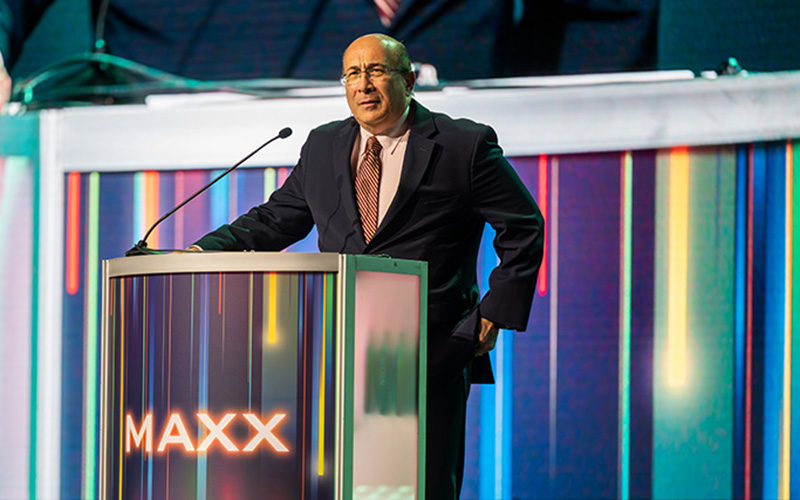CNBC’s Ron Insana Shares Economic Insights at MAXX 2025
Posted by Alyse Knudsen on October 22, 2025

On Oct. 14, credit union professionals at MAXX 2025 gained big-picture insight into the U.S. economy from veteran CNBC financial journalist Ron Insana, who offered what he called a “top-down” view of the forces shaping what’s next.
Unpredictability and Policy
Though Insana said it is difficult to forecast six months or a year ahead, he provided a top-down view of where he thinks the economy is headed overall. “There are multiple factors at work that are having large and profound effects on different sectors of the economy, sometimes going in different directions.”
There’s a saying on Wall Street that he says he has grown to hate: that the markets hate uncertainty. “They really hate unpredictability — and that’s really where we are today when it comes to policy.”
Stagflation and the Fed
“We’re in sort of a stagflation environment where inflation is higher than the Federal Reserve wants it to be,” Insana shared, “and the labor market activity is weaker than the Feds are willing to tolerate. It’s not the 70s and 80s, and there are some really important differences between then and now, although there are some interesting similarities, as well.” The Fed’s challenge, he added, is balancing rising prices against a weakening labor market.
 Tariffs and Trade Tensions
Tariffs and Trade Tensions
Trade policies continue to add pressure, Insana said. Tariffs on Chinese goods have reached historic highs, with consumers now absorbing about 55% of the tariff increases on prices. Potential new tariffs could disrupt supply chains and raise prices across key industries. “There’s a lot of fluidity in the trade conversations, not a lot of concrete agreements that have been put into place so that’s left us with on average a 15% tariff rate in the United States, which is almost seven times higher than it was prior to President Trump taking office. And it’s the highest tariff the U.S. has imposed broadly speaking since the 1930s.”
The K-Shaped Economy
Insana described the current landscape as a “K-shaped economy,” where some sectors and individuals thrive while others struggle. He noted that the top 10% of wage earners in the U.S. account for 49.2% of all consumer spending in the U.S., “and then there’s everybody else. The farther down you are on the income ladder, the more disposable income is being eaten up by inflation, and so the worse off people are.”
One interesting note Insana mentioned is that the production of cardboard boxes is down. Production of boxes is watched closely as these are what everything is shipped in, and this indicator is tilting toward recession. The purchase by companies of very heavy trucks that deliver goods is also down. “It tells us that there are some underlying cracks in the economy,” said Insana.
Labor and Immigration
The labor market is somewhat frozen, Insana noted, and crackdowns on immigration are contributing to labor shortages in sectors like agriculture, construction, home healthcare, and hospitality, pushing up costs and reducing production. “As the labor force shrinks and the demand for labor shrinks at the same time, it’s very hard to get a read on whether or not the labor market is healthy. Because if you have both the supply and demand for labor coming down, it takes fewer jobs to hold the unemployment rate steady. So, it’s a very strange situation to be in.”
AI’s Economic Impact
“There are people who say there’s AI — and everything else when it comes to this economy,” Insana said. Massive AI investments in industries across the country are fueling much of today’s growth — accounting for up to 90% of first-half GDP increases — but also driving higher energy demand and costs.
Watch to Watch
There are a lot of moving parts to watch. “Quite frankly, in the 41 years that I’ve been doing this, this is one of the most difficult periods I’ve ever seen to analyze,” Insana said. There is so much change happening so quickly, not just on the domestic economic policy front but when you look at geo-politics, he continued.
“Generally speaking, I’m much more of an optimist,” he concluded, and despite the complex outlook, Insana encouraged credit unions to stay informed and adaptable in navigating today’s unpredictable economy.
Posted in MAXX, MAXX Keynote Speakers, Top Headlines.


















